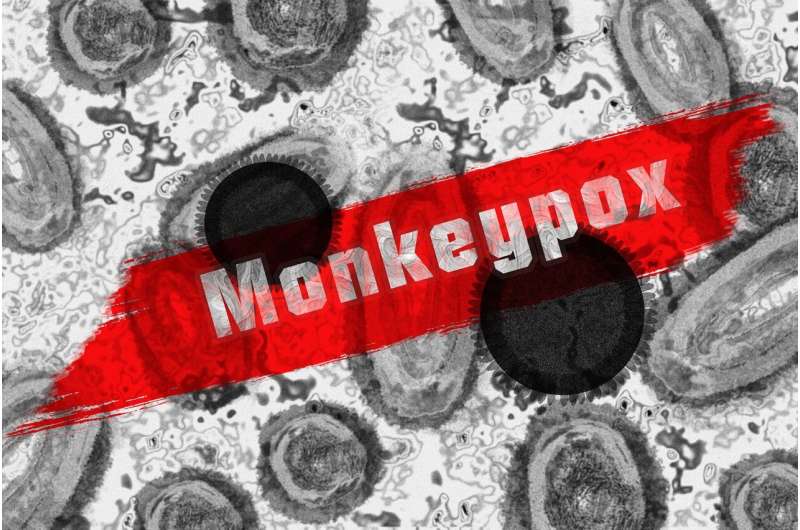Credit: Pixabay/CC0 Public Domain
Inaccurate media coverage of the monkeypox outbreak has resulted in misinformation about the many ways it can be spread, resulting in stigma (shaming and biased attitudes) toward people who develop the disease. Nurses play a key role in delivering appropriate care related to monkeypox by creating safe spaces for affected individuals regardless of sexual behaviors, race and ethnicity, gender, or co-infections.
These conclusions are published in the Journal of the Association of Nurses in AIDS Care (JANAC).
Risks of monkeypox transmission
Anyone is at risk of monkeypox because it can be spread through:
- Close physical contact and shared personal items, such as clothes and bedsheets
- Person-to-person contact, such as contact with skin
- Contact with contaminated surfaces
- Respiratory droplets, such as when a person with monkeypox coughs, sneezes, or laughs
Thus, the spread of monkeypox is not tied to race, ethnicity, gender, or sexual orientation. However, "due to inconsistent messaging about where the current monkeypox outbreak originated, and the communities most affected by the outbreak, we are confusing an outbreak transmitted through social networks and high community viral load, with sexual behaviors," according to Alanna Bergman, MSN, AGNP-BC, AAHIVS, a Ph.D. candidate at Johns Hopkins University School of Nursing, and coauthors.
Jeffrey Kwong, DNP, MPH, ANP-BC, ACRN, a professor at Rutgers School of Nursing, and colleagues add that some reports in the popular press have described monkeypox as a sexually transmitted disease, even though scientists aren't sure about that yet. "The virus can unquestionably be transmitted during contact associated with sexual encounters. It remains to be seen, however, whether exposure to sexual fluids is the primary mode of transmission."
Monkeypox-associated stigma
Still, during the current outbreak in the U.S., most confirmed cases so far have been among men who reported having sex with other men. In addition, people living with HIV are disproportionally likely to develop monkeypox. As a result, a person who develops monkeypox may face considerable stigma, including multiple types of bias if they have both monkeypox and HIV.
Monkeypox-associated stigma can make a person too embarrassed to get tested for the disease, seek care, and/or follow the prescribed treatment regimen. Men who have sex with men and people with HIV may face prejudice that blocks them from receiving appropriate preventive care and counseling about monkeypox, or prompt diagnosis and treatment.
Nurses can help protect individuals from the effects of stigma by educating other healthcare professionals about stigmatizing behaviors. They also need to be proactive about identifying people at risk of monkeypox and suggesting vaccination and other prevention strategies. "Combating stigma begins with nurses being knowledgeable about modes of transmission, sex-positive harm reduction strategies, and general infection control practices," Dr. Kwong and his co-authors note. "Recognizing clinical manifestations of the illness can lead to earlier diagnosis, access to care, and prevention activities."
More information: Jeffrey Kwong et al, Monkeypox Virus Outbreak 2022: Key Epidemiologic, Clinical, Diagnostic, and Prevention Considerations, Journal of the Association of Nurses in AIDS Care (2022). DOI: 10.1097/JNC.0000000000000365
Provided by Wolters Kluwer Health
























